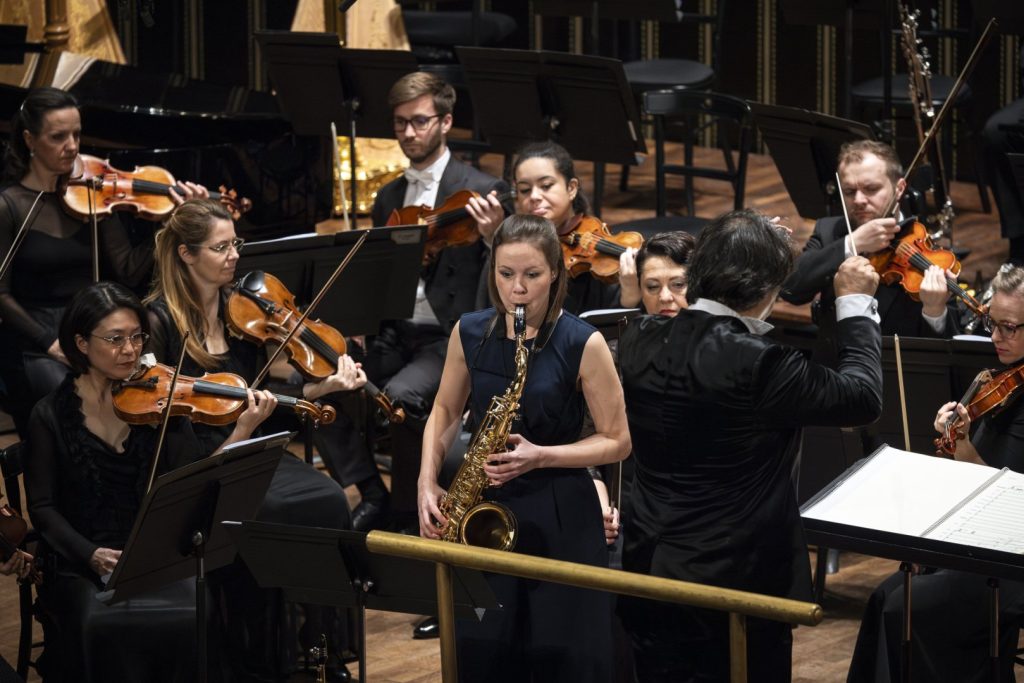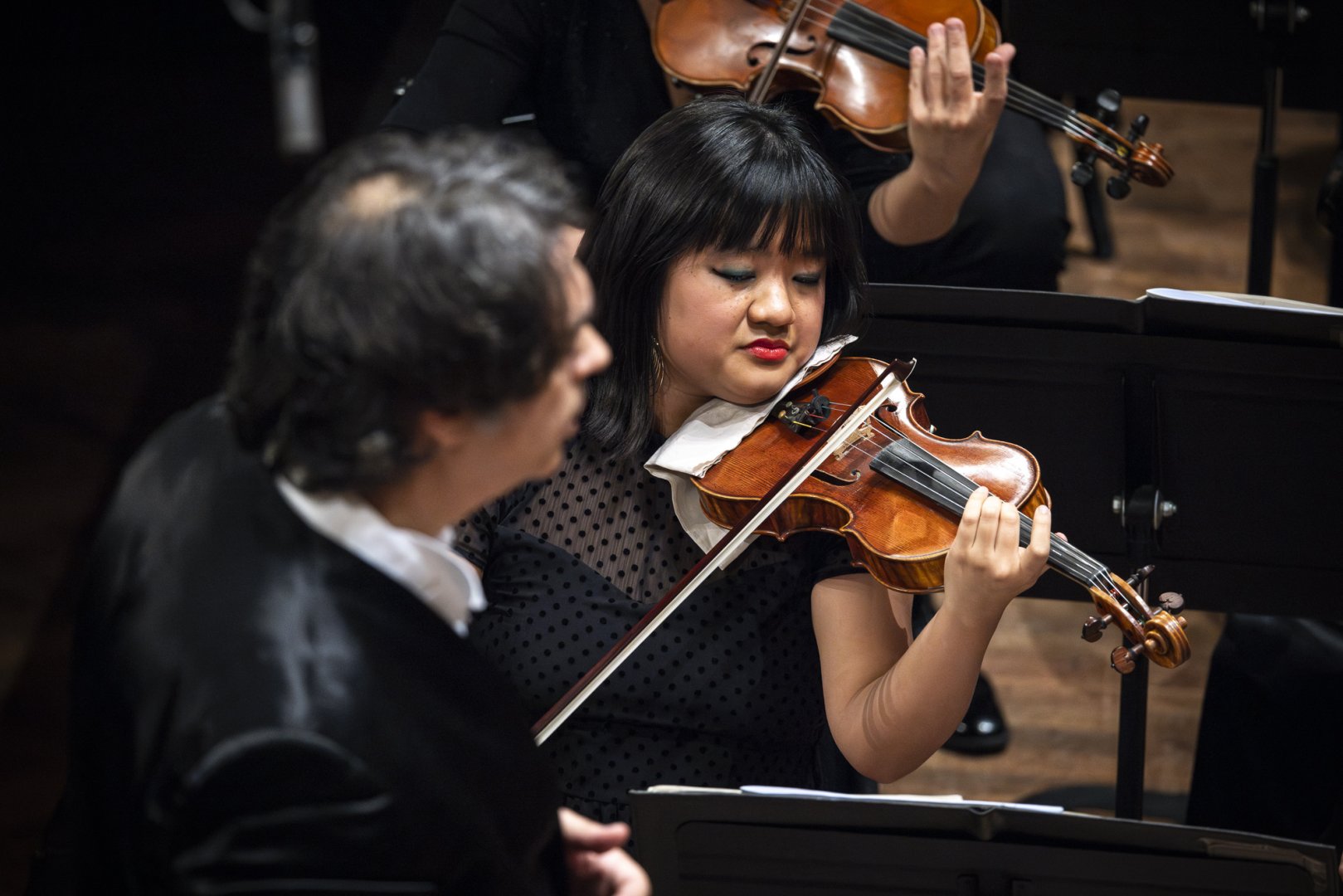On March 23, Portuguese conductor/composer Pedro Amaral (a former student of Péter Eötvös) led Concerto Budapest at the Liszt Academy in an uncommon program that featured debuts of three 20th and 21st century works. His own composition ‘Scherzo’ made its world debut as the opening piece, followed by the Hungarian debuts of Péter Eötvös’ ‘Focus’ (2021-22) and a rare hearing of Lutoslawski’s Concerto for orchestra.
But the uncanny impact of this concert didn’t settle in until the world was informed of Eötvös’ death the following day. To add more irony, earlier this month Eötvös was given the Kossuth Grand Prize for 2024, Hungary’s most prestigious award in the field of culture. For this prize, we could say ‘too little, too late’ especially since Eötvös was already a well-established international musical figure. Also, Concerto Budapest’s concert this night served as the last performance of an Eötvös’ work during his lifetime.
Because of the above, I feel compelled to give attention to Eötvös’ work as the unmistakable focus of the concert – not only because of the unusual circumstances, but because “Focus” is a shining example of Eötvös’ deep brilliance as a composer. Written for two saxophones (tenor and baritone) and orchestra, it takes its title from the filmic concept “depth of field” — what’s in the background and what’s in the foreground — the way a camera would be able to frame (and reframe) an image.
The superb saxophonist Erzsébet Seleljo alternated on both instruments with great skill, tone, and musicality. Luckily, she had been able to consult Eötvös himself on the previous Monday to discuss the score. She recounted their conversation:
„[He told me:] ‘A lot of ideas in this concerto come from jazz, so when seeing an accent or a swung-rhythm, exaggerate it, make it sound jazzy. Take extra care to get the right style!’
There was another moment where Péter suggested I played a legato-passage with a cat-like legato, to make the motif sound like a „Meow”.”

According to Seleljo, ‘Péter loved jazz and his love for saxophone also came from there. So a lot of musical moments in the concerto resemble the influence of jazz, sometimes in rhythm and in other times in articulation and phrasing. Péter notates his music with an extreme precision and for him it was very important to play every motif in the right style. For me this piece is a lush mixture of colours that come from the orchestration and also this work gives the saxophonist a chance to explore different shades of sound and to show the versatility of our instrument.’
As much as the solos were captivating (and easily convincing that the saxophone makes an exceptionally alluring orchestral soloist), Eötvös’ orchestral colorings behind both of them were like a carousel of multiple changing atmospheres that covered a wide spectrum of styles, and all beautifully delineated for every instrument. It’s the kind of piece I want to hear again and again, just to catch every amazing moment.
Amaral’s ‘Scherzo’, a blizzard of exotic moto perpetuo energy and thick orchestration, certainly provided a lusty warm-up for the orchestra. It was an effervescent carnival of simultaneous events that only calmed down briefly in the middle for a little contemplation, then returned to its robust but organized chaos until the finish. Kudos to the intrepid orchestra!

Witold Lutoslawski, an often overlooked Soviet-era composer, got his time in the spotlight here* with Amaral’s gutsy rendition of his Concerto for orchestra written in the early 1950s. The three movements were highly descriptive and programmatic, at times showing a kinship to Shostakovich and Samuel Barber, with many folkloric and modernist elements woven in. The third movement was perhaps the most intriguing, with its slow buildup of bass pizzicato that developed into a tutti syncopation framed with a sense of impending disaster – almost a gloomy reference to Ionesco’s ‘Rhinoceros’ at the door. The final movement’s cataclysmic proportions, as it segues mercilessly through a boiling cauldron and into a chorale, leads to an explosive climax. It’s a potent, dramatic work; thankfully, a muscular maestro like Amaral vividly illuminated all its horror and beauty. (Just before they played this work, he dedicated its performance to the great pianist Maurizio Pollini, who had just died.)
The orchestra was on fire for this program. This is an ensemble that has no fear of conquering the awesome musical challenges these scores provided. Hat tip also to the equally awesome concertmaster, Miranda Liu, who played many solos with perfection.
[*Correction: this Lutoslawski score was given its Hungarian debut by the Danubia Orchestra in 2018.]











